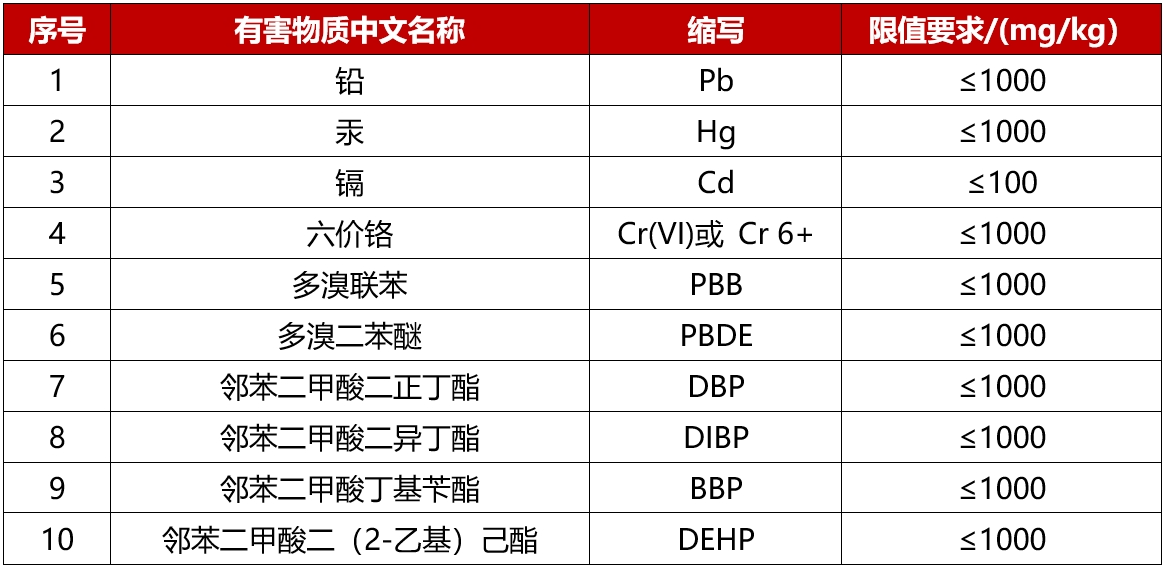According to the mandatory national standard revision plan issued by the National Standards Commission, the Ministry of Industry and Information Technology has organized the preparation of eight mandatory national standards (draft for soliciting opinions), including the "Requirements for Restricting the Use of Hazardous Substances in Electrical and Electronic Products", and further solicited opinions from all sectors of society. The deadline is January 18, 2025, and the public can provide feedback on different opinions during the public notice period.
The main updated technical content of the "Requirements for Restriction of Hazardous Substances in Electrical and Electronic Products" (draft for comments) is as follows:
(1) The types of hazardous substances controlled in China's electrical and electronic products have been increased from six categories to ten categories, maintaining consistency with international industry requirements (adding four new phthalate ester hazardous substances (PAEs): dibutyl phthalate (DBP), diisobutyl phthalate (DIBP), butyl benzyl phthalate (BBP), and di (2-ethylhexyl) hexyl phthalate (DHP) control limits). Details are as follows:

(2) In the testing methods for harmful substance content limit indicators in electrical and electronic products, GB/T 39560 (all parts) "Determination of Certain Substances in Electronic and Electrical Products" series standard methods (IEC 62321 (all parts), IDT) are uniformly used to ensure the accuracy and consistency of RoHS compliance testing results in the industry;
(3) In the requirements for the restriction of the use of hazardous substances in electrical and electronic products, new digital expression methods and requirements such as QR codes and screen displays have been added to reduce the cost of RoHS control for enterprises;
(4) When declaring the conformity of hazardous substance restrictions for electrical and electronic products, it is necessary to add the testing report in the technical support documents to cover the requirements for high-risk components of hazardous substances in the product, in order to enhance the overall credibility of the industry's RoHS "self declaration" conformity assessment results;
(5) Added inspection rules to support the industry in continuously ensuring RoHS compliance and quality in the routine production process of electrical and electronic products.